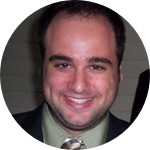About This Project
Epstein-Barr virus (EBV) infects 9 out of 10 people and can lead to cancers such as Hodgkin's, Burkitt's, and AIDS-related lymphomas. This project will explore molecular structure in EBV as a potential source of its cancer-causing properties, which are not well understood currently. Additionally, this work will help in the development of new cancer drugs that can target EBV molecular structures.Ask the Scientists
Join The DiscussionWhat is the context of this research?
This project will determine the structures of molecules made by Epstein-Barr virus (EBV) that have important implications to cancer.
EBV causes lifelong infections in more than 9 out of 10 people. In ways that are not yet known infection can increase one's chances of developing cancers such as Hodgkin's, Burkitt's, and AIDS-related lymphomas. During infection the virus "hides" within white blood cells and produces various biological molecules to manipulate cells to maintain infection. It is believed that this manipulation is what increases the risk of cancer.
One type of molecule produced by the virus is ribonucleic acid (RNA). RNA is similar to DNA, but can fold back on itself to form complex 3D structures that can mediate many important biological functions. My previous work at Yale was focused on using powerful computational approaches to identify RNAs likely to form functional structures: this work was recently published in the journals BMC Genomics and RNA Biology.
Of particular interest, I discovered two new EBV RNA molecules that are produced in very high abundance during an especially active type of EBV infection. Both RNAs are predicted to fold into complex structures that I believe are involved in important interactions with host cells. What is required now are data to experimentally determine these structures. This information will allow us to make better hypotheses about the functions of these RNAs. This information will also help in the design of new cancer therapeutics that target (by binding to) RNA structures to inhibit function.
What is the significance of this project?
This work has great potential for not only increasing our knowledge of a virus of very high medical importance, but also in the treatment of cancer. EBV-associated cancers are of serious concern globally. EBV is related to a common cancer known as Hodgkin's lymphoma, which disproportionately affects the young (ages 15 - 35) and people in their early middle ages (55+). In the developing world EBV is more commonly associated with another blood cancer known as Burkitt's lymphoma. Sadly, Burkitt's lymphomas occur most commonly in children - indeed, Burkitt's lymphomas are the leading cause of cancer in African children. In immune-compromised adults (e.g. transplant patients, or HIV positive individuals) EBV is also implicated in various other cancers (lymphoproliferative disorders).
This research will experimentally determine the molecular structures of RNA molecules produced by EBV in an especially aggressive type of infection. Knowledge of these structures provides a basis for future studies to better understand their functions and, importantly, in the targeting of these structures with drug molecules. RNA as a therapeutic target is an emerging, cutting-edge field in biomedicine. The functional structures I will determine in EBV will provide excellent candidates for drug targets.
What are the goals of the project?
The goal of this project is to perform biochemical structure mapping on EBV RNA structures that have importance to viral infection and cancer. Specifically, I need the requested funding to buy reagents to perform these experiments and to analyze the results.
In this approach I will:
- Expose EBV RNAs to structure-sensitive chemicals (DMS and SHAPE). These chemicals modify parts of RNA depending on whether or not that region is buried in structure.
- Analyze which parts of the RNA are reactive to these chemicals. After chemical modification, the parts of the RNA that react with chemicals can be determined using RNA sequencing.
- Use the pattern of chemical reactivity to determine the functional structure of the RNA. The parts of the RNA that react strongly with chemicals are unlikely to be buried in structure. This knowledge can be used as a constraint in building a model of this RNA's structure.
Stretch Goal: After these structural analyses I will be in a better position to make functional hypotheses regarding these new EBV RNAs. To help determine these possible functions I will perform knockdowns on the EBV RNAs using antisense DNA (small bits of DNA that can bind the RNA and lead to molecular degradation). I will perform high-throughput RNA sequencing (RNA-Seq) comparing untreated EBV-infected cells to EBV RNA-knockdown cells. RNA-Seq will allow me to quantify host gene expression in untreated and knockdowns cells (lacking the EBV RNAs). Changes in expression between the samples will show which host genes are affected by the EBV RNAs and may shed light on the genetic pathways affected by EBV that may give rise to cancer.
Budget
The requested funds will be used to purchase reagents and equipment necessary for conducting RNA structure mapping on Epstein-Barr virus RNAs.
Beyond the requested funds for the structure mapping experiments, I've added a "stretch goal" of $10,000. These additional funds would allow me to perform high-throughput RNA sequencing experiments to determine human host genes (implicated in cancer) that are influenced by EBV RNAs.
Endorsed by
Meet the Team
Team Bio
I am currently a post-doctoral researcher in the lab of Prof. Joan A. Steitz at Yale University.I received my PhD in 2012 from the University of Rochester (Prof. Douglas H. Turner lab). My dissertation was focused on the Discovery and characterization of influenza virus RNA secondary structures. More information about myself, my research and my qualifications (including a full CV and publication list) can be found on my LinkedIn and Wordpress pages.
I am also active on Wikipedia where I work on improving RNA and virus related pages.
Additional Information
- Additional information about me, my research, and my qualifications can be found on my Wordpress and LinkedIn pages as well as on the Steitz lab website.
- More information about the RNAs I discovered can be found on Wikipedia and in my recent papers in BMC Genomics and RNA Biology.
- For more information on efforts to target RNA with drugs see the Matthew Disney Lab at the Scripps Institute.
Project Backers
- 21Backers
- 111%Funded
- $2,223Total Donations
- $105.86Average Donation



